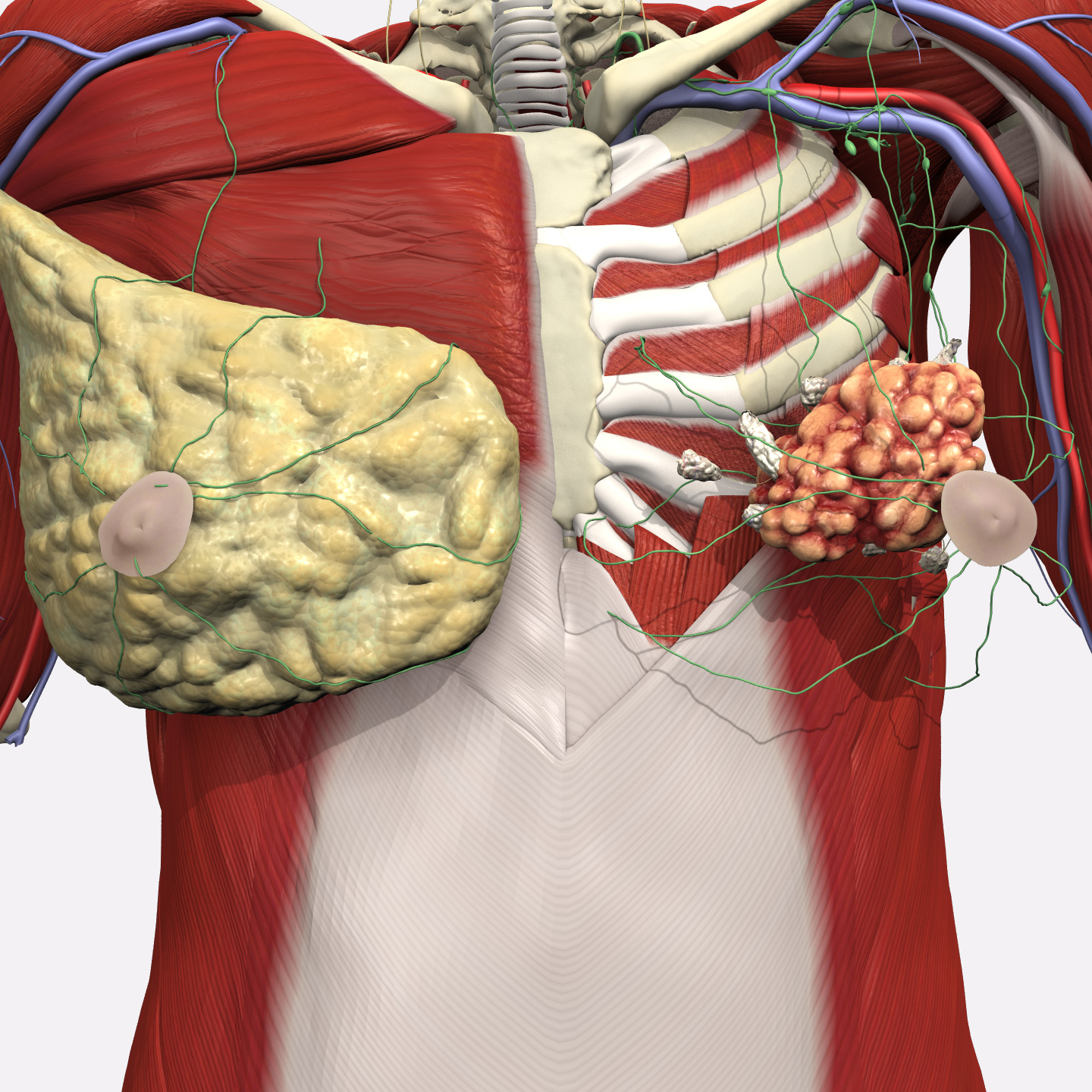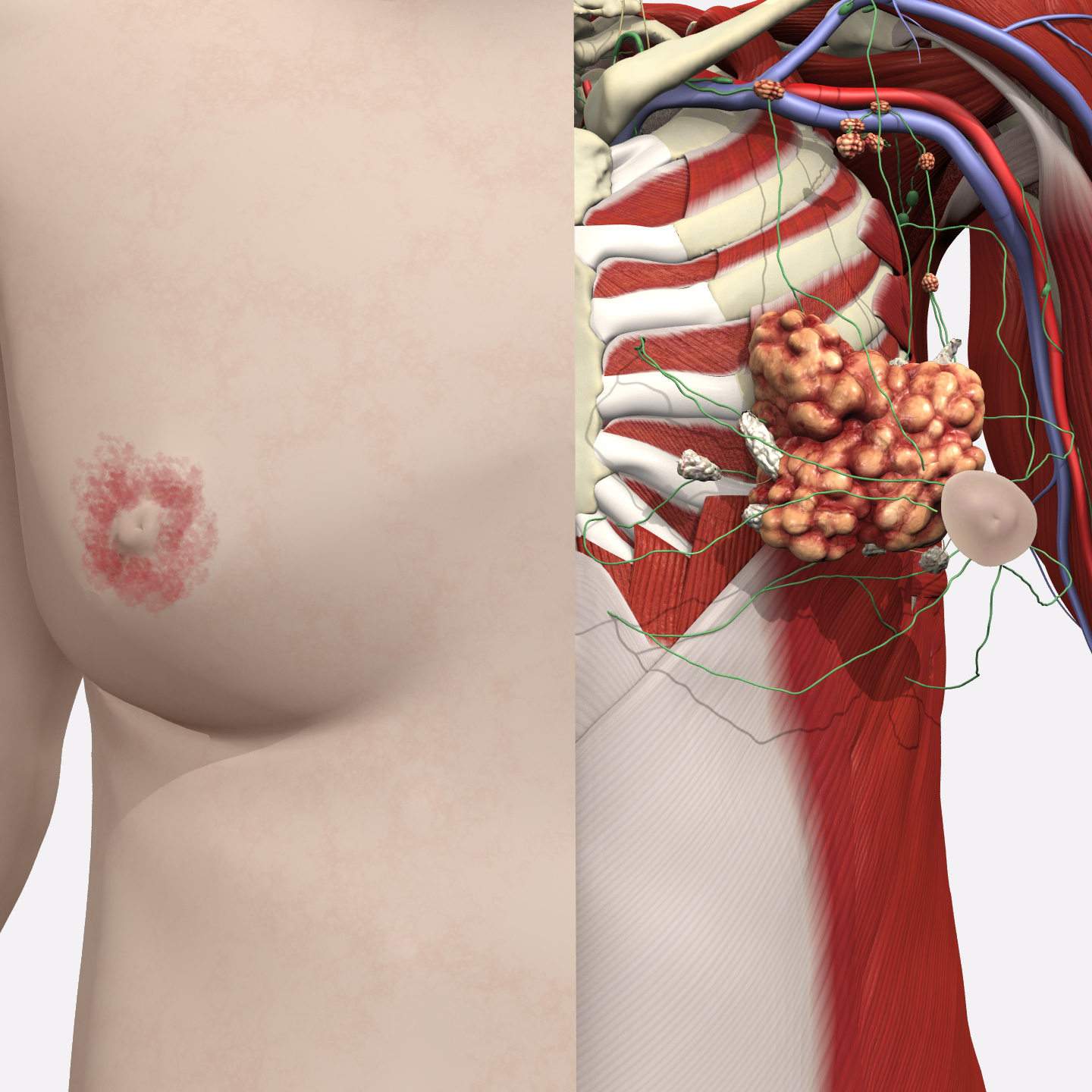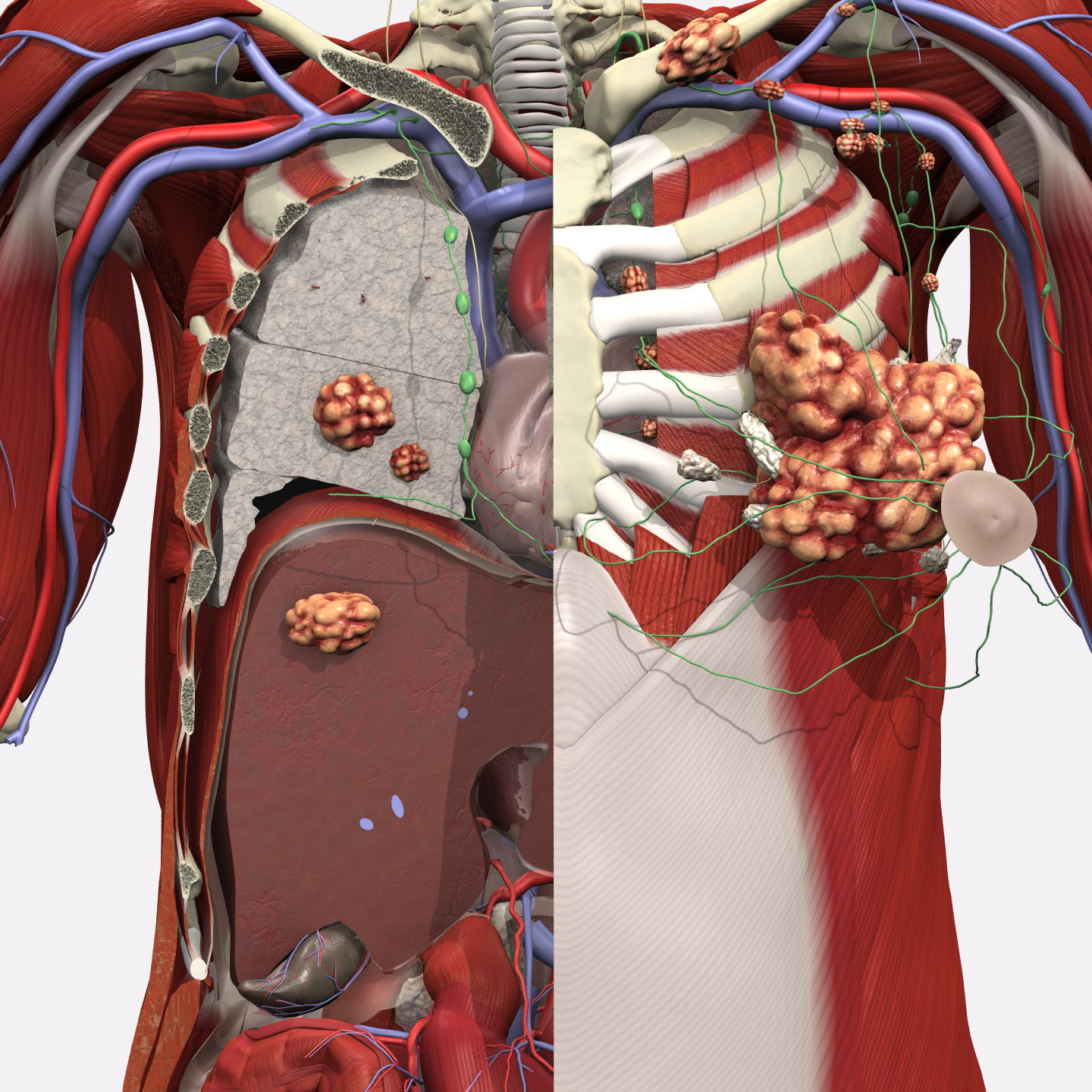Explore the region
Drag the image to rotate the anatomy
Invasive breast cancer is the most common type, accounting for 80% of all breast cancer cases.
Typically, abnormal cells begin to grow within the lactiferous ducts of the breast. Invasive breast cancer occurs when these abnormal cells spread outside of the lactiferous ducts to other structures in the breast.



